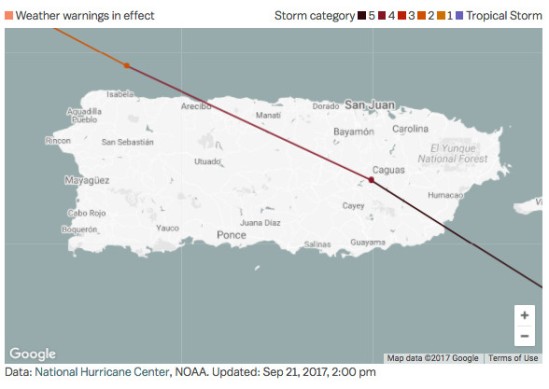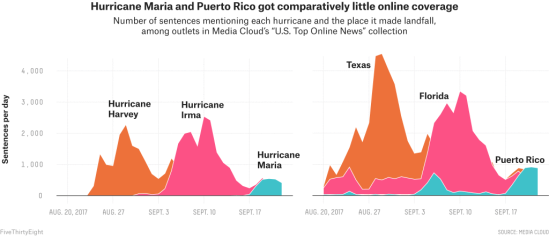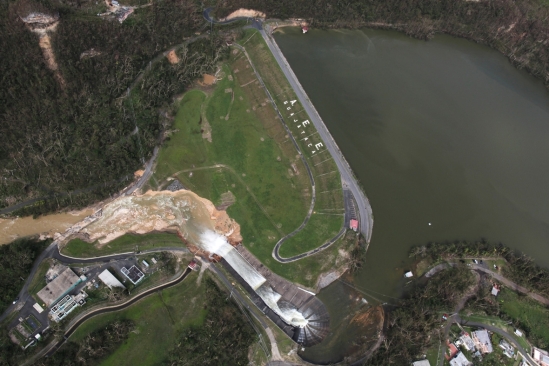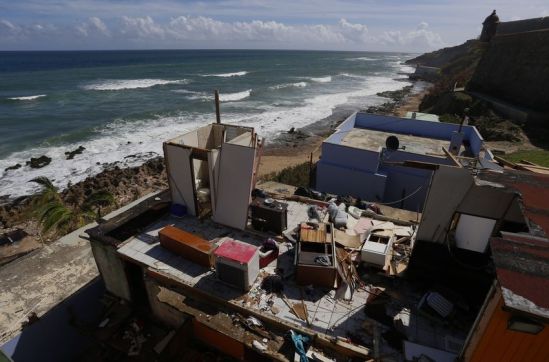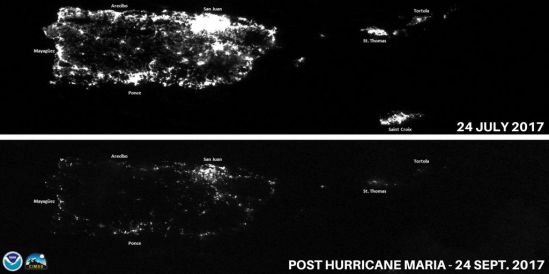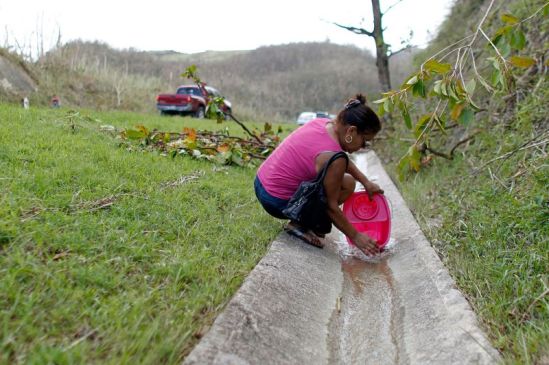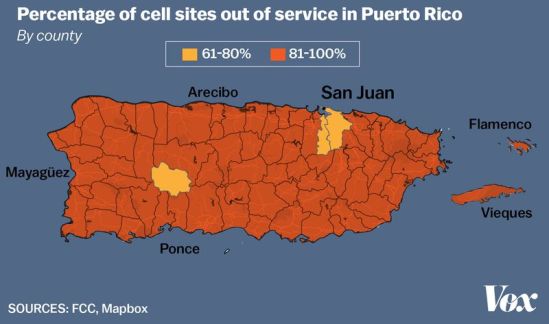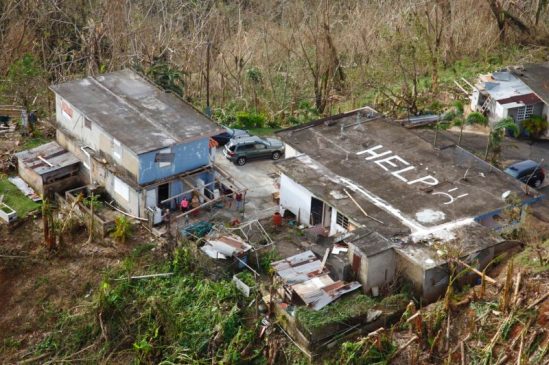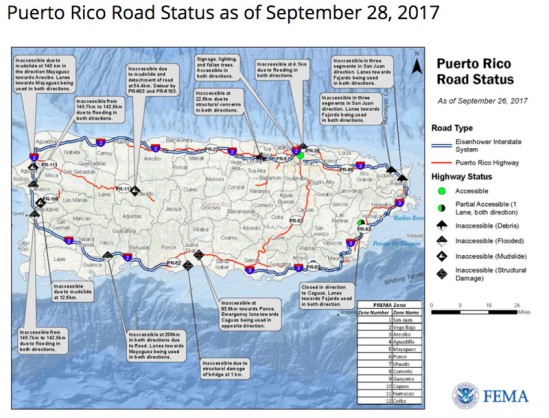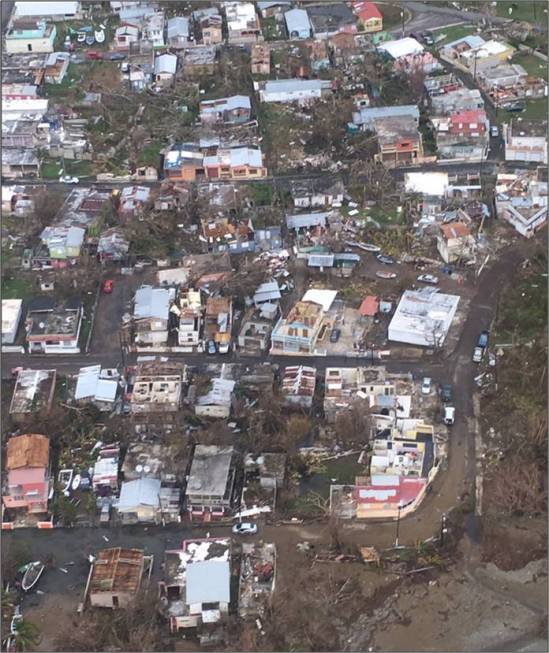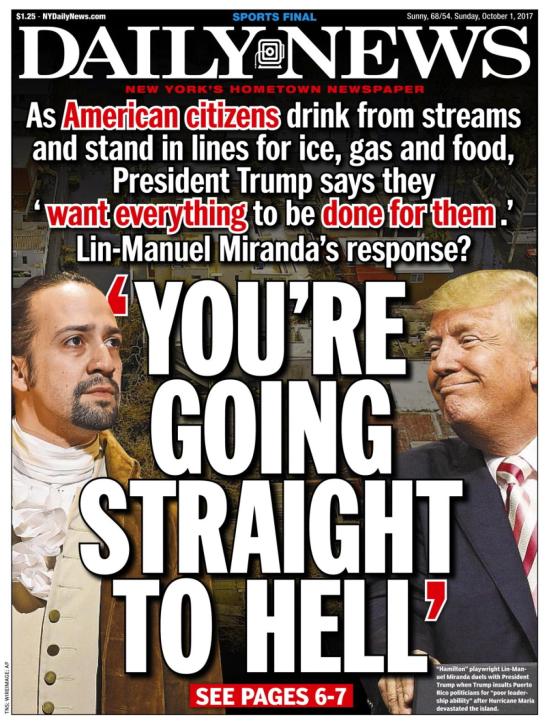While most of the media was fixated on ABC canceling the Roseanne revival show over its star, on Tuesday, May 29, 2018, the New England Journal of Medicine released a study by Harvard and other institutions suggesting that Hurricane Maria’s ultimate fallout was over 4,600 “excess deaths” Between September 30 and December 31, 2017. This is twice the mortality of Hurricane Katrina and makes Maria the deadliest disaster on US soil for more than a century. The only other US disaster with a higher death toll was the Galveston, Texas hurricane which resulted in 6,000-12,000 people dead. Yet, the real tragedy here is that these deaths were largely due to delayed medical care as well as lack of necessities such as electricity, water, and cellphone service. Nevertheless, this new finding stands in stark contrast to the government official count of 64 which is a gross underestimate that has remained unchanged for months. But the new research validates previous analyses of mortality data and reports from the ground by journalists and other researchers who found the death count well above 1,000.
When Donald Trump visited Puerto Rico nearly 2 weeks after the storm hit on October 3, 2017, the official death count was just 16, compelling him to insist that Puerto Rico wasn’t a “real catastrophe” like Hurricane Katrina. As he said, “Everybody watching can really be very proud of what’s taken place in Puerto Rico.” But since then, multiple media outlets have found evidence of hurricane deaths not included in the official death count. These investigations prompted members of Congress to request an audit of the hurricane deaths and led social science researchers to take a closer look at the data. In December, they published an analysis of mortality data from the Puerto Rico Vital Statistics System to compare the historical death averages for September and October deaths that year. They found that the storm death rate was closer to 1,085 while a New York Times analysis of similar data found the death toll being 1,052.
The latest study shows that even these estimates were very low. This makes sense since these studies relied on the Puerto Rican government which provided an unreliable mortality picture in the months after Hurricane Maria. With George Washington University’s help, the government’s recount of the death toll is still in the works leaving the people of Puerto Rico a long way from closure from Hurricane Maria. Now they’re preparing for the 2018 hurricane season set to begin on June 1, even as thousands of Puerto Ricans are still without power. As disasterologist Samantha Motano tweeted, “We have the technology to see them coming. We know how to mitigate and prepare for disasters. The United States has the money to prevent these deaths. We are choosing not to act.”
To come up with this new estimate, the NEJM researchers surveyed some 3,300 randomly chosen Puerto Rican households in January and February. They asked each one about deaths in their family between September 30 and December 31, 2017 and factors that might’ve contributed to them. They also asked about damage to their homes, whether they were displaced, and if they had access to food, water, healthcare, electricity, and cellphones. The researchers then compared the results with the island’s official death statistics from 2016 and found a 62% increase in the mortality rate in 2017, which added up to an estimated 4,645 deaths linked to Hurricane Maria (ranging from 793 to 8,498 deaths). About 1/3 of these deaths were attributed to delays or interruptions of healthcare, which in many cases was due to widespread power outages across the island for weeks and months after the storm knocked out 80% of the island’s power grid. And they wrote that the total death estimate “is likely to be conservative since subsequent adjustments for survivor bias and household-size distributions increase this estimate to more than 5,000.”
Obviously, a survey like this has its limitations. There’s always some inherent bias in who volunteers to participate and who doesn’t. Not to mention, we have possible bias in people’s memories of events. But it’s certainly the most exhaustive attempts so far to quantify Hurricane Maria’s death toll. And according to Puerto Rican demographer Alexis Santos, the study’s methodology was consistent with how other scholars have tried to measure the death counts as he told Vox, “Under the level of devastation experienced following Hurricane Maria it is very difficult to separate deaths from the environmental or contextual conditions, one may even say that Hurricane Maria impacted all of the deaths that occurred during that period. That is why approaching it through the perspective of excess deaths provides a figure that excludes the deaths that would have happened under normal conditions.”
Puerto Rico’s government has stopped sharing mortality data with the public in December 2017 and refused to provide it to researchers who conducted the study without its help. But the lack of transparency is no surprise since it’s been a key factor in the inaccuracies surrounding Hurricane Maria’s deadly impact. At the same time, Governor Ricardo Rossello ordered a death recount which public health researchers at George Washington University are doing right now and is still underway. But his office did respond to the NEJM report with this statement: “As the world knows, the magnitude of this tragic disaster caused by Hurricane Maria resulted in many fatalities. We have always expected the number to be higher than what was previously reported. That is why we commissioned The George Washington University (GWU) to carry out a thorough study on the number of fatalities caused by Hurricane Maria which will be released soon. Both studies will help us better prepare for future natural disasters and prevent lives from being lost.”
Of course, suspicion will remain for years between Donald Trump’s habit of weaponizing anti-Latino hysteria as his political centerpiece and the unfolding of an essentially unprecedented human tragedy in a Spanish-speaking US territory. Sure we can’t dismiss that Trump and his team simply don’t know what they’re doing. But Hurricane Maria’s impact on Puerto Rico is the only real crisis we’ve had to see Trump wrestle with which has been a total fiasco with a high human cost.
Puerto Rico’s catastrophe has a 3-fold origin. First, the situation is objectively difficult since Hurricane. Maria was a large storm. But before then, Puerto Rico’s infrastructure was shitty and its economic conditions were unfavorable. Second, under Donald Trump’s “leadership,” the federal government wasn’t prepared for the hurricane and failed to properly place supplies and provide full use of military assets. And last, Trump was never willing to admit that the initial response went poorly and try to improve. Being the narcissistic sociopath he is, admitting wrongdoing and taking responsibility isn’t part of who Trump is. Because as far as he’s concerned, such actions are for losers. So instead, he resorted to defensiveness and counterpunching. Last fall, he wasted no time turning a disaster response into a culture war pitting heroic first responders against indolent Puerto Rican officials. On September 30, 2017, he tweeted: “The Mayor of San Juan, who was very complimentary only a few days ago, has now been told by the Democrats that you must be nasty to Trump. …Such poor leadership ability by the Mayor of San Juan, and others in Puerto Rico, who are not able to get their workers to help. They…. …want everything to be done for them when it should be a community effort. 10,000 Federal workers now on Island doing a fantastic job.”
Obviously, this didn’t convince any skeptic that Donald Trump was handling the disaster well. More like far from it, in fact. But it did accomplish what Trump is good at while cornered: driving politics back to the baseline question of how you feel about the guy overall. Soon enough, the news cycle moves on. However, this made no difference and is the wrong way to respond to a natural disaster crisis. The recovery itself didn’t move particularly quickly either. On average, Puerto Ricans went 84 days without electricity, 68 days without water, and 41 days without cellphone coverage after Maria. That long-term persistence of lethal conditions is how we ended up with thousands dead from a storm that, by the official count, killed “only” 64 people through direct damage. But that wasn’t on the TV news, so Trump didn’t care. As the study’s authors wrote on the revised death toll, “These numbers will serve as an important independent comparison to official statistics from death-registry data, which are currently being reevaluated and underscore the inattention of the U.S. government to the frail infrastructure of Puerto Rico.”
While Donald Trump and his administration aren’t entirely responsible for the Hurricane Maria disaster. But it will be difficult, perhaps impossible, to assess how much it had to do with the federal government’s indifference or ineffectiveness, how much it was the current Puerto Rican officials’ fault, and how much was the effects of long-term Puerto Rican poverty and structural conditions. In any case, Caribbean assistance and recovery weren’t going to be easy since Maria would’ve been devastating under the best of circumstances. Even so, Trump’s reaction was terrible. He picked fights with local government. And he focused more on congratulating himself than doing something worth bragging about while visiting the island. Worse, he didn’t follow up. Puerto Rico and the Virgin Islands simply vanished from his public statements and there’s no reporting to indicate anything was different behind closed doors. There’s no record of FEMA officials or anyone else being summoned to the White House and urged to do more. No evidence of high-level White House coordination of efforts from various agencies involved such as they were. In fact, even the best reporting on the government response shows it was botched from the beginning. As the government went all out to assist Houston, not Puerto Rico.
Donald Trump’s failure to act is extremely important because without presidential involvement, executive branch departments and agencies aren’t likely to mobilize despite that many people involved are professionals who care deeply about doing their jobs well. We’ve seen other times the effects on agencies when they know they have to answer to the president. If a Homeland Security secretary knows she’ll have to make a daily report to the president on what he department did about any acute problem, she’ll make sure she has an answer. And that’s exactly when bureaucrats find solutions for intractable problems. When a president declares something mission accomplished and moved on, then even a disastrous continuing situation slides down the list of priorities. This is especially true for the Puerto Rican people’s urgent needs who don’t have their own congressional representatives to put pressure on those agencies. If the impetus doesn’t come from the president, it’s not going to happen. Thus, the best long-term solution for the island probably is statehood, but that won’t help Puerto Rico right now. Though it would be a fitting consequence of the failure to help these citizens when they needed it the most.
Unlike Barack Obama, Donald Trump was lucky to inherit a stable and improving an economic system thanks to a competent, conventional Federal Reserve policymaking. There have been no domestic terrorist attack or major wars. So we should be grateful for the baseline conditions of peace and prosperity. But where Trump’s tested, he’s failed bigly. In the diplomatic crisis between Qatar and the United Arab Emirates, Donald Trump’s decision making is largely driven by his various corrupt associates’ personal financial interests. He’s left the US isolated on Iran while gaining nothing. He’s focused on the atmospherics of a potential summit with Kim Jong Un on Korea while leaving US allies baffled on who’s making decisions and why. The opioid crisis has apparently gotten worse in 2017 and shows no sign of abating.
The carnage in Puerto Rico illustrates the most severe manifestation of Donald Trump’s presidential unfitness despite being far from the only one. Yet, the media focus on Donald Trump’s various antics has the unfortunate tendency to detract from the basic reality that he doesn’t put in the time or the work to solve problems when that’s really the issue’s core. Put a telegenic demagogue in office, you’ll get some memorable demagogic moments that’ll boost news ratings. But you won’t get an adequate hurricane response, meaning a sky-high death toll as a result. For some Americans, Trump’s constant stream of invective and controversy is just another form of reality television. Except that it’s not unless you’re making comparisons to the Hunger Games, which involved people actually killing each other in a post-apocalyptic hellscape. However, frighteningly so, Trump isn’t a reality TV star anymore but an elected official with real and important responsibilities that he shirks on a regular basis. What he does or doesn’t do has huge practical consequences for all Americans, which will be negative for most of us. And sometimes those consequences are the difference between life and death as what went on with Puerto Rico in the wake of Hurricane Maria. To hear about the deaths of 4645 people in any disaster would be heartwrenching enough for any president to hear. But Trump doesn’t care and as long as he’s in office our country’s problems won’t get better and more likely exacerbate in the years to come.


